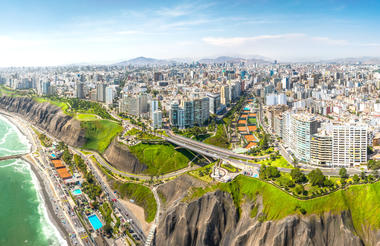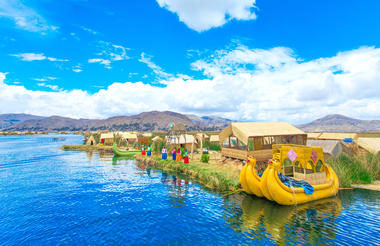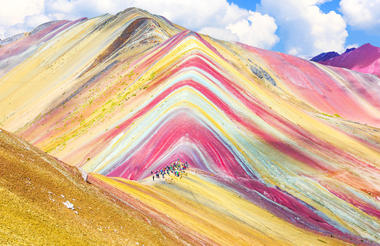Peru is most famous for the sacred archaeological site of Machu Picchu – visited each year by scores of intrepid hikers who brave the Inca Trail’s arduous slopes to explore the age-old ruins. The country’s attractions extend far beyond the mystical allure of this legendary location and include palm-fringed beaches, quaint Andean villages and archaeological treasures that predate Machu Picchu by hundreds of years – all imbued with the nation’s rich melange of indigenous and colonial cultures. Equally enticing are the exotic reaches of Peru’s Amazon rainforest; Lima’s superb eateries, exquisite architecture and effervescent nightlife; the glittering, mountain-ringed waters of Lake Titicaca; and the vibrant city of Cusco, referred to by the Incas as ‘the centre of the world’.



The Galapagos Islands are an archipelago of volcanic islands off the coast of Ecuador, renowned for their amazing endemic species, especially the giant tortoises which give the islands their name. Only discovered in the 1800s, the islands are a UNESCO World Heritage Site and the surrounding waters are a national park and biological marine reserve. Of the 18 islands Baltra, Floreana, Isabela, San Cristobal, and Santa Cruz are now populated by more than 25 000 people. The original names were given by an English pirate, but the Ecuadorians have given the islands Spanish names. The Islands were made famous by Charles Darwin after he visited them on his scientific voyage on the HMS Beagle, and the endemic species here contributed significantly to Darwinian Theory.



This remote Chilean island - some 3200 kilometres from the South American mainland in the Pacific Ocean – is one of the most isolated populated places on earth, endowed with a rich and enigmatic heritage. Historians believe the first inhabitants were Polynesians from neighbouring islands who travelled for days on open seas in crude catamarans and canoes to settle on what locals call Rapa Nui, known to the Western world as Easter Island. The destination is best known for the hundreds of huge, ancient statues that surround its coastline, believed to have been carved by the island people to represent ancestral deities. Apart from its outstanding archaeological offerings, Easter Island has a unique natural habitat that lends itself to fantastic trekking and scuba diving.









